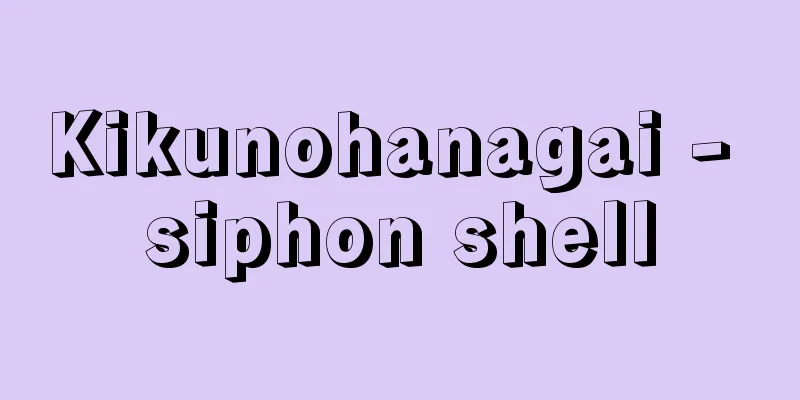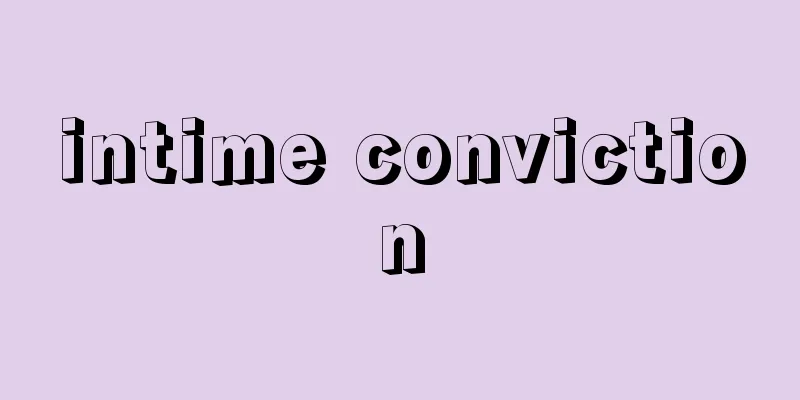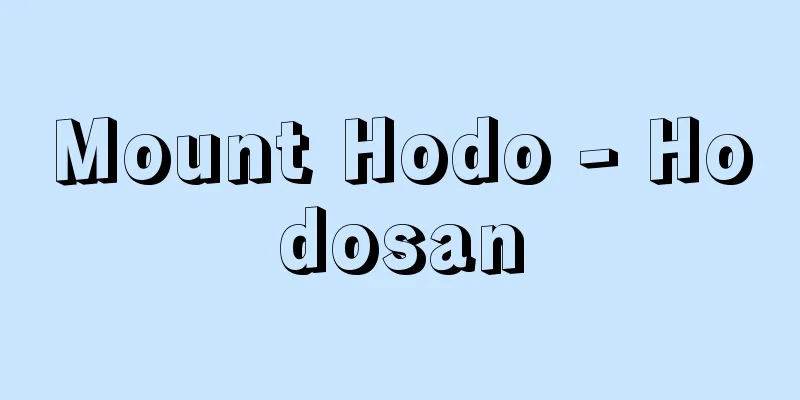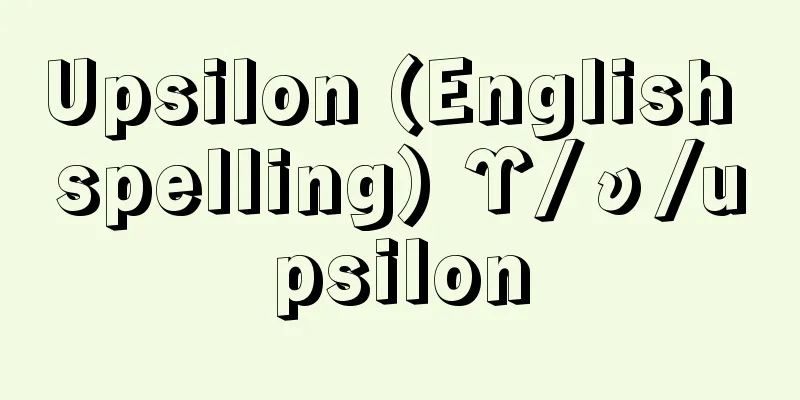headache
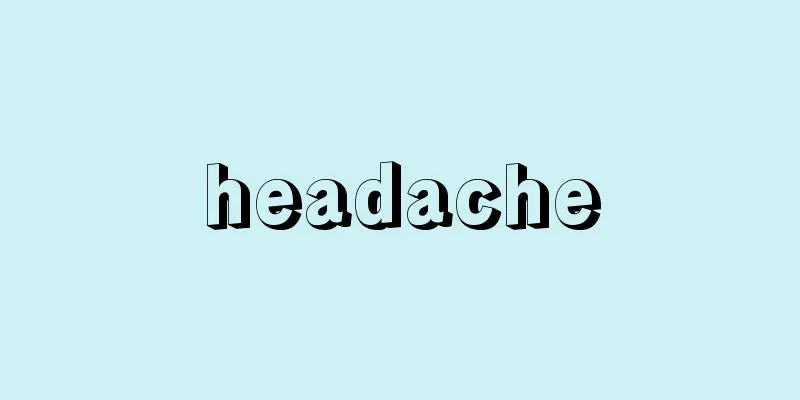
|
(1) headache Headaches are classified into primary and secondary headaches according to the International Headache Classification of the Society, Second Edition (ICHD-II) (Japanese Headache Society/Committee on Dissemination of the International Classification of Headache Disorders, 2007) [⇨2-48]. Diseases that cause secondary headaches are explained in other sections, so here we will focus on primary headaches. (2) Migraine ) It is a unilateral , throbbing headache, and in many cases, nausea, photophobia, and phonophobia are associated symptoms. Triptans, which are serotonin receptor agonists, are often used to treat the acute phase of an attack. ClassificationThere are various types, but they can be broadly divided into "migraine without aura" and "migraine with aura." Epidemiology: The prevalence of migraine in people aged 15 years or older in Japan is approximately 8.4% (3.6% in men and 13.0% in women); the trend is similar in Western countries, where it has been reported that women are approximately three times more likely to suffer from migraine than men. Etiology and Pathophysiology The etiology and pathology of migraine have yet to be elucidated. It is believed that a phenomenon called cortical spreading depression is involved in migraine aura. Headache is said to be caused by dilation of cerebral blood vessels and cerebral meningeal arteries due to activation of the trigeminovascular system and neurogenic inflammation of the cerebral dura mater (Figure 15-17-5). Clinical symptoms : Migraine is a unilateral, pulsatile headache of moderate to severe intensity that lasts for 4 to 72 hours. It is exacerbated by movement and is accompanied by nausea, photophobia, and phonophobia. Aura is defined as a reversible localized neurological symptom that develops gradually over 5-20 minutes and lasts less than 60 minutes. Among migraines with aura, those that consist of one or more of the following symptoms: visual, sensory, or speech are classified as "migraine with typical aura." Visual aura is the most common type of aura, and often appears as a scintillating scotoma, which patients often describe as "a flickering sensation before my eyes." There are no objective symptoms characteristic of migraine. Diagnosis and Differential DiagnosisThe ICHD-II diagnostic criteria for migraine without aura are shown in Table 15-17-3. Items B to D list the duration of the attack, characteristics of the headache, and associated symptoms, while item E describes the differentiation of the possibility of secondary headaches. For other diagnostic criteria for migraine, please refer to ICHD-II (Japanese Headache Society/International Headache Classification Promotion Committee, 2007). History and prognosis: In cases with a high frequency of migraine attacks, it has been reported that migraine progresses to chronic migraine. In chronic migraine, symptoms such as photosensitivity and phonophobia, nausea, and vomiting, which are characteristic of migraine, decrease, and the headache, which has a pulsatile component but is otherwise similar in nature to tension-type headache, occurs more than half of the month and occurs for more than three months. Treatment Pharmacological therapy for migraine can be divided into acute treatment and preventive therapy. Triptans, which are serotonin receptor agonists, ergotamine preparations, and analgesics are used as acute treatments (Japanese Headache Society, 2006). Five types of triptans are available in Japan: sumatriptan, zolmitriptan, eletriptan, rizatriptan, and naratriptan. In addition to tablets, sumatriptan can also be administered as a subcutaneous injection (self-injection at home is possible) and a nasal spray. Triptans are usually the first choice for "migraine without aura" and "typical aura accompanied by migraine", but triptans are contraindicated for hemiplegic migraine and basilar migraine. As preventive therapy, the calcium channel blocker lomerizine and the antiepileptic drug valproic acid are covered by insurance, but beta-blockers, antidepressants, angiotensin-converting enzyme inhibitors, and angiotensin II receptor blockers may also be administered. (3) Tension-type headache Concept: A headache that presents a feeling of pressure or tightness and is thought to be related to tension in the head and neck muscles. Classification: Headache is classified into four types based on the frequency of attacks: infrequent episodic tension-type headache, frequent episodic tension-type headache, chronic tension-type headache, and suspected tension-type headache. Epidemiology : The prevalence in Japan is estimated to be 22.3% (18.1% in men and 26.4% in women). Etiology and Pathophysiology: Although much remains unknown about the mechanism behind tension-type headaches, it is said to be triggered by psychological and social stress. Other factors that are thought to cause tension-type headaches include anxiety, depression, and neurosis, as well as conditions that cause tension in the muscles of the head and neck, such as abnormal posture, cervical spine lesions, temporomandibular joint abnormalities, and ophthalmologic diseases. Clinical symptoms and diagnosis: A mild to moderate headache with a bilateral pressure or squeezing sensation that is not aggravated by everyday activities. There is no nausea, but patients may experience photophobia or phonophobia. As with migraine, tension-type headaches do not have any characteristic objective symptoms. The ICHD-II diagnostic criteria for frequent episodic tension-type headaches are shown in Table 15-17-4. Treatment Pharmacological therapies include analgesics (acetaminophen, NSAIDs), muscle relaxants (epezolin hydrochloride, tizanidine hydrochloride), and anti-anxiety drugs (diazepam). Non-pharmacological therapies include neck acupressure, acupuncture, Tiger Balm, hypnotherapy, and headache exercises. (4) Cluster headache ) Concept: Pain occurring around the orbit or in the orbit on one side, with cluster and remission periods. It is characterized by autonomic nervous system symptoms such as lacrimation, conjunctival congestion, nasal congestion, and runny nose on the same side as the headache. EpidemiologyThe prevalence of cluster headache is estimated to be approximately 0.07-0.09%, which is lower than that of migraine. Etiology and pathophysiology: Because the pain site is mainly in the first division of the trigeminal nerve and autonomic symptoms are present, the lesion is assumed to be distal to the bifurcation of the internal carotid artery and near the cavernous sinus. It is thought that the hypothalamus regulates such peripheral lesions in a timed manner, resulting in headaches. Clinical symptoms and diagnosis: Severe pain lasting for about an hour, mainly in the area of the first division of the trigeminal nerve, such as around the orbit and around the eye on one side, is often felt immediately after going to bed. There is a cluster period in which headaches occur almost every day, and a remission period in which headaches do not occur. Many patients are unable to stay still during a headache attack due to the intense pain, and move around restlessly. This contrasts with cases of trigeminal neuralgia, which causes pain in a similar area, but in which patients stay still because of the pain. Autonomic symptoms indicating increased parasympathetic function, such as lacrimation, conjunctival congestion, nasal congestion, rhinorrhea, increased sweating in the forehead, miosis, and ptosis, appear on the same side as the headache, and therefore ICHD-II classifies cluster headaches and related disorders as trigeminal autonomic headaches. Table 15-17-5 The diagnostic criteria for cluster headache are listed below. Treatment : Subcutaneous injections of sumatriptan and administration of pure oxygen (7 L/min for 15-20 minutes) are effective acute treatments. Sumatriptan nasal spray and oral administration of zolmitriptan have also been reported to be effective and may be considered as options. In cases where cluster headache attacks are frequent, calcium channel blockers may be used as preventive therapy. (5) Trigeminal neuralgia Concept: A brief, electric-like pain that occurs in the area controlled by the second and third branches of the trigeminal nerve. In the ICHD-II classification , it is included in "cranial neuralgia and central facial pain" along with glossopharyngeal neuralgia. When caused by organic lesions other than vascular compression, it is classified as symptomatic trigeminal neuralgia, and otherwise as typical trigeminal neuralgia. Epidemiology: The annual incidence rate of the disease is 4.3 per 100,000 people, with a male-to-female ratio of 1:1.73, predominating in women. The incidence rate increases with age. Etiology and Pathophysiology: The cause of typical trigeminal neuralgia is believed to be compression of blood vessels at the root entry zone of the trigeminal nerve. Clinical symptoms and diagnosis: It is a unilateral electric shock-like or stabbing pain that occurs most frequently in the second and third branches of the trigeminal nerve. It lasts for a short period of time, from a few seconds to two minutes. In many cases, there is a trigger area on the face where touching a specific part of the face induces neuralgia. Trigger areas are found on the lips, alae of the nose, nasolabial fold, cheeks, and gums. Diagnosis follows the ICHD-II diagnostic criteria (Table 15-17-6). Causes of symptomatic trigeminal neuralgia include multiple sclerosis and tumors such as epidermoid tumors, meningiomas, and neurinomas, and these must be differentiated from each other. Treatment Drug therapy is attempted, and surgical treatment such as neurovascular decompression is considered for non-responsive cases. The first-choice drug is carbamazepine, and other options include baclofen, clonazepam, phenytoin, and valproic acid. [Toshihiko Shimizu and Norihiro Suzuki] ■ References <br /> Translated by the Japanese Headache Society and the International Headache Classification Promotion Committee: International Classification of Headache Disorders, 2nd ed., revised and expanded Japanese edition, Igaku-Shoin, Tokyo, 2007. Japanese Headache Society (ed.): Guidelines for the Treatment of Chronic Headache, Igaku-Shoin, Tokyo, 2006. Headache (symptomatology)Pathophysiology: The areas within the skull that are sensitive to pain are the dura mater and blood vessels (internal carotid artery, middle cerebral artery, anterior cerebral artery, vertebral basilar artery, meningeal arteries, and venous sinuses, etc.). It is thought that headaches are caused by compression and inflammation of these areas. Differential diagnosis When diagnosing headaches, it is important to differentiate between diseases that can cause secondary headaches, such as those listed in Table 2-48-1. In particular, there is a possibility of a life-threatening secondary headache being present in cases such as sudden onset of headache, unprecedented severe headache, headache noticed for the first time in people over 50 years of age, headache in patients with underlying diseases such as cancer or immunodeficiency, and headache accompanied by fever, meningeal irritation symptoms, and other neurological symptoms. For this reason, a detailed medical history should be taken regarding the nature, location, type of onset, duration, frequency, time of occurrence of headache, and accompanying symptoms, and a head imaging test should be performed to proceed with differential diagnosis. Depending on the case, a cerebrospinal fluid test should also be considered. [⇨15-17-2)] [Shimizu Toshihiko, Suzuki Norihiro] ■References : Translated by the Japanese Headache Society and the International Headache Classification Promotion Committee: International Classification of Headache Disorders, 2nd ed., revised and expanded Japanese edition, Igaku-Shoin: Tokyo, 2007. Classification of headaches by the International Headache Society (Japanese Headache Society/Committee for Promotion of the International Headache Classification, 2007) Table 2-48-1 Source : Internal Medicine, 10th Edition About Internal Medicine, 10th Edition Information |
|
(1) 頭痛 について 頭痛は,「国際頭痛学会頭痛分類第2版」(ICHD-Ⅱ)(日本頭痛学会・国際頭痛分類普及委員会,2007)により一次性頭痛と二次性頭痛に分類される【⇨2-48】.二次性頭痛の原因となる疾患については,他項で解説されており,ここでは一次性頭痛を中心に説明する. (2)片頭痛 (migraine ) 概念 片側性,拍動性の頭痛で,随伴症状として悪心や光過敏・音過敏を伴う症例が多い.発作急性期の治療には,セロトニン受容体アゴニストであるトリプタンを用いることが多い. 分類 さまざまなタイプがあるが大きく「前兆のない片頭痛」と「前兆のある片頭痛」に二分される. 疫学 わが国における15歳以上の片頭痛の有病率は約8.4%(男性3.6%,女性13.0%)であり,その傾向は欧米諸国でも同様で女性が男性に対し約3倍多いと報告されている. 病因・病態生理 片頭痛の病因および病態はいまだに明らかにされていない.片頭痛における前兆には,cortical spreading depression(皮質拡延性抑制)とよばれる現象が関与していると考えられている.頭痛は三叉神経血管系の活性化による脳血管および脳硬膜動脈の拡張や脳硬膜の神経原性炎症に起因するとされている(図15-17-5). 臨床症状 片頭痛は,片側性・拍動性で,中等度から重度の強さをもち,4~72時間持続する頭痛である.また動作による増悪を認め,随伴症状として悪心や光過敏・音過敏を有する. 前兆は5~20分にわたり徐々に進展し,かつ持続時間が60分未満の可逆性脳局在神経症状と定義される.前兆のある片頭痛のなかで視覚症状,感覚症状あるいは言語症状のいずれか1つ以上からなる片頭痛は「典型的前兆に片頭痛を伴うもの」に分類される.視覚性の前兆は最も一般的な前兆で,閃輝暗点として出現する場合が多く,患者は「眼前のチカチカ」と表現することが多い.なお片頭痛に特徴的な他覚症状はない. 診断・鑑別診断 前兆のない片頭痛のICHD-Ⅱの診断基準を表15-17-3に記す.項目B〜Dには発作時間,頭痛の性状および随伴症状などが列挙され,項目Eには二次性頭痛の可能性を鑑別することが記載されている.その他の片頭痛の診断基準についてはICHD-Ⅱ(日本頭痛学会・国際頭痛分類普及委員会,2007)を参照されたい. 経過・予後 片頭痛発作頻度の多い症例では,慢性片頭痛への移行が報告されている.慢性片頭痛は,片頭痛の特徴とされる光・音過敏や悪心・嘔吐などが減少し,拍動性の要素はあるがその他は緊張型頭痛に類似した性質の頭痛が月の半分以上かつ3カ月以上の頻度で出現するものである. 治療 片頭痛の薬物療法は,急性期治療と予防療法に分けられる.急性期治療薬としてセロトニン受容体アゴニストであるトリプタン,エルゴタミン製剤および鎮痛薬などが用いられる(日本頭痛学会,2006).わが国で使用可能なトリプタンはスマトリプタン,ゾルミトリプタン,エレトリプタン,リザトリプタンおよびナラトリプタンの5種類である.スマトリプタンは錠剤のほか皮下注射薬(在宅自己注射が可能)および点鼻薬としての投与も可能である.なお「前兆のない片頭痛」および「典型的前兆に片頭痛を伴うもの」では通常トリプタンが第一選択薬となるが,片麻痺性片頭痛や脳底型片頭痛では,トリプタンは禁忌とされている. 予防療法としてカルシウム拮抗薬であるロメリジンおよび抗てんかん薬のバルプロ酸が保険適用となっているが, β遮断薬,抗うつ薬,アンジオテンシン変換酵素阻害薬,アンジオテンシンⅡ受容体阻害薬なども投与されることがある. (3)緊張型頭痛 (tension-type headache) 概念 圧迫感または締めつけ感を呈する頭痛で,頭頸部筋肉における緊張が関係するとされている. 分類 発作の出現頻度により稀発反復性緊張型頭痛,頻発反復性緊張型頭痛,慢性緊張型頭痛および緊張型頭痛の疑いの4型に分類される. 疫学 わが国での有病率は22.3%(男性18.1%,女性26.4%)とされている. 病因・病態生理 緊張型頭痛の発生機序については不明な部分が多いが,精神的,社会的ストレスが誘因といわれている.その他,不安,抑うつ,神経症などの精神的な因子,姿勢異常,頸椎病変,顎関節異常,眼科疾患など頭頸部の筋肉に緊張を与える病態が影響し緊張型頭痛を引き起こすと考えられている. 臨床症状・診断 両側性に出現する圧迫感または締めつけられる感じをもつ軽度~中等度の頭痛で,日常的な動作による増悪はない.悪心はないが,光過敏または音過敏を呈することがある.緊張型頭痛においても片頭痛と同様に特徴的な他覚症状はない.頻発反復性緊張型頭痛のICHD-Ⅱによる診断基準を表15-17-4に記す. 治療 薬物療法として鎮痛薬(アセトアミノフェン,NSAIDs),筋弛緩薬(塩酸エペゾリン,塩酸チザニジン)および抗不安薬(ジアゼパム)などが用いられる.非薬物療法として頸部指圧,鍼灸,タイガーバーム,催眠療法,頭痛体操などがある. (4)群発頭痛 (cluster headache ) 概念 片側の眼窩周囲や眼窩に生じる疼痛で群発期と寛解期をもつ.頭痛と同側に流涙・結膜充血・鼻閉・鼻汁などの自律神経症状を伴うことが特徴である. 疫学 群発頭痛の有病率は約0.07〜0.09%とされており片頭痛と比べると少ない. 病因・病態生理 疼痛部位がおもに三叉神経第1枝領域を中心とすることや自律神経症状を呈することから,病変として内頸動脈分岐部遠位から海綿静脈洞付近が想定されている.このような末梢性の病変を視床下部が時間的な調節を行い頭痛が発生するのではないかと考えられている. 臨床症状・診断 片側の眼窩周囲や眼窩など三叉神経第1枝領域を中心に1時間程度続く激しい疼痛で,就寝直後に認められることが多く,毎日のように頭痛が生じる群発期と,頭痛を認めない寛解期がある.激痛のため頭痛発作中はじっとしていることができず,落ち着きなく動き回る症例が多い.これは同様部位に痛みを生じるが,痛みのために安静を保つ三叉神経痛の症例と対照的である.頭痛と同側に流涙,結膜充血,鼻閉,鼻漏,前額部の発汗亢進,縮瞳,眼瞼下垂などの副交感神経機能亢進を示す自律神経症状が出現するため,ICHD-Ⅱ では群発頭痛およびその近縁疾患について,三叉神経・自律神経性頭痛として分類している.表15-17-5 に「群発頭痛」の診断基準を記す. 治療 急性期治療としては,スマトリプタンの皮下注射,純酸素投与(7 L/分で15〜20分間)が有効である.スマトリプタン点鼻薬やゾルミトリプタン経口投与の有効性も報告されており選択肢に考慮してもよい.群発頭痛の発作回数が多い場合予防療法として,カルシウム拮抗薬を用いる場合もある. (5) 三叉神経痛(trigeminal neuralgia) 概念 三叉神経第2枝および第3枝支配領域に出現する短時間の電撃痛である. 分類 ICHD-Ⅱでは,舌咽神経痛などとともに「頭部神経痛および中枢性顔面痛」に含まれる.血管性圧迫以外の器質的病変が原因となる場合は症候性三叉神経痛,それ以外は典型的三叉神経痛に分類される. 疫学 10万人あたりの年間発症数は4.3人で,男女比は1:1.73と女性に多い.年齢が進むにつれ発症者が増加する. 病因・病態生理 典型的三叉神経痛の原因は,三叉神経のroot entry zoneでの血管による圧迫とされている. 臨床症状・診断 三叉神経支配領域の第2枝および第3枝領域に好発する一側性電撃様あるいは穿刺様の疼痛である.持続時間は数分の1秒〜2分と短い.多くの症例で,顔面の特定の部位に触れると神経痛が誘発されるトリガー域といわれる部位を有する.トリガー域は,口唇・鼻翼・鼻唇溝・頬・歯肉などに認められる.診断はICHD-Ⅱの診断基準に従う(表15-17-6).症候性三叉神経痛の原因には,多発性硬化症や類上皮腫・髄膜腫・神経鞘腫などの腫瘍がありこれらを鑑別する必要がある. 治療 薬物療法が試みられ,不応例に対して神経血管減圧術などの外科的治療が考慮される.第一選択薬はカルバマゼピンであり,その他の選択薬としてはバクロフェン,クロナゼパム,フェニトイン,バルプロ酸などがある.[清水利彦・鈴木則宏] ■文献 日本頭痛学会・国際頭痛分類普及委員会訳:国際頭痛分類第2版 新訂増補日本語版,医学書院,東京,2007. 日本頭痛学会編:慢性頭痛の診療ガイドライン,医学書院,東京,2006. 頭痛(症候学)頭痛は,神経内科のみならず一般内科・総合内科診療において最も頻度の多い主訴の1つである.頭痛の分類は,「国際頭痛学会頭痛分類第2版」(ICHD-Ⅱ)に基づき一次性頭痛,二次性頭痛および頭部神経痛,中枢性・一次性顔面痛の3部に分けられる(表2-48-1)(日本頭痛学会・国際頭痛分類普及委員会,2007). 病態生理 頭蓋内において痛みに対し感受性を有する部位は硬膜および血管(内頸動脈,中大脳動脈,前大脳動脈,椎骨脳底動脈,硬膜動脈および静脈洞など)とされている.これらの部位の圧迫および炎症などにより頭痛が生じると考えられている. 鑑別診断 頭痛の診断において大切なことは,表2-48-1に記載されているような二次性頭痛の原因となる疾患を鑑別することである.特に,突然発症した頭痛,いままで経験したことのないような激しい頭痛,50歳以上ではじめて自覚された頭痛,癌や免疫不全など基礎疾患のある患者の頭痛,熱,髄膜刺激症状およびその他神経症状を伴う頭痛などでは生命に影響を及ぼす二次性頭痛が存在している可能性がある.このため,頭痛の性状,部位,発症のしかた,持続時間,頻度,出現する時間,随伴症状などについて詳細な病歴を聴取するとともに,頭部画像検査を施行し鑑別診断をすすめる.症例によっては髄液検査の施行についても検討する.【⇨15-17-2)】[清水利彦・鈴木則宏] ■文献 日本頭痛学会・国際頭痛分類普及委員会訳:国際頭痛分類第2版 新訂増補日本語版,医学書院:東京,2007. 国際頭痛学会の頭痛の分類(日本頭痛学会・国際頭痛分類普及委員会,2007)"> 表2-48-1 出典 内科学 第10版内科学 第10版について 情報 |
>>: Suit - Suit (English spelling)
Recommend
Deep Sea - Okunoumi
…An inlet further inland from Ishinomaki Bay in e...
Gallicanism - Gallicanism
…the tendency of the French Catholic Church to se...
GAPI - Gapi
Abbreviation for Gabungan Politik Indonesia, an In...
Schreibersite (English spelling)
A phosphide with the chemical composition (Fe,Ni) ...
Hell, M. (English spelling) HellM
...That is, the human body is under the influence...
Sakra-Devānam Indra (English spelling)
...Indra, a representative god in ancient Indian ...
Masazane Minamoto
1059-1127 A court noble in the late Heian period....
Iri - Iri
In some cases, the Ainu practice matrimonial or m...
not straight
…a penalty kick is awarded to the not responsible...
Ajiro Edition - Ajiro Ami
...Products include a wide variety of shallow con...
Faust (unit) (English spelling) Faust
…However, the actual unit of measurement was also...
Uratojuku
…The Toki and Usuda clans, who were vassals of th...
Sutherland, E.
…However, the movement to redefine popular histor...
Jorge Amado
1912‐2001 Brazilian novelist. Since making his deb...
Hydridae
…the name is derived from the many-headed water s...
![Shimotsuma [city] - Shimotsuma](/upload/images/67cbcb888b284.webp)

